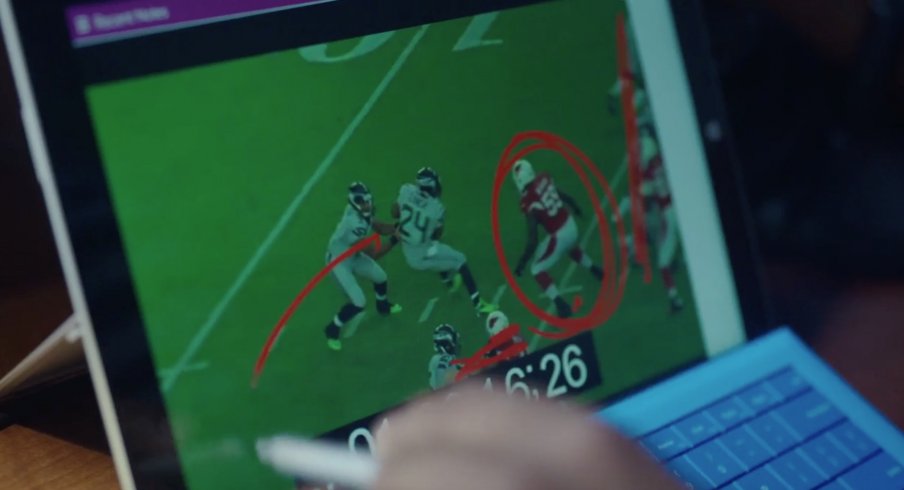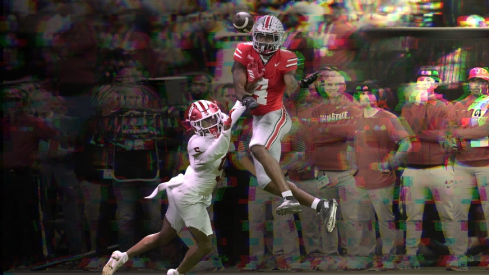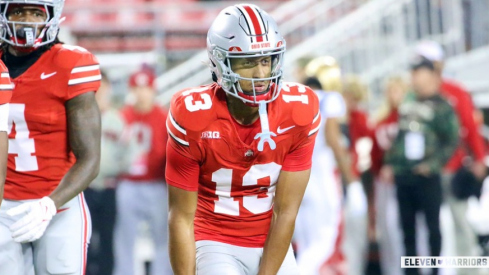In countless cubicles and conference rooms across the nation, millions of eyeballs pour over the seemingly never-ending stream of information making its way into Corporate America on a daily basis. This analysis affects everything from how much you pay in insurance premiums each month to the scent of your shampoo.
With over 661 current job openings on LinkedIn for the role of 'Data Analyst' in the state of Ohio alone, it's clear that Big Data shapes nearly every aspect of our lives whether we recognize it or not. Researchers are constantly searching for the next insight to feed their decision-making process, trying to identify any critical piece of information that may set them apart from their competitors. To lovers of free enterprise, this model best rewards those that not only work hard to identify these nuggets of intellectual gold, but are also smart enough to recognize how to cash them in.
Such a purely American philosophy seems, at least on the surface, to run parallel to the same philosophy underlying the way football is coached at the professional, collegiate, and high school levels in both the past and current ages. However, just as many businesses have fought waves of competitive innovation in both the courtroom and the court of public opinion, football coaches have often tried to do the same.
Most college football fans are versed in the battle between spread, no-huddle offensive minds like Urban Meyer and Rich Rodriguez and their conservative, defensive-focused opponents like Nick Saban and Bret Bielema. But as that battle seems to have largely waned in favor of the uptempo style, NFL coaches are shaping the debate against a far stronger foe.
As detailed last week in an article from Kevin Clark of The Ringer, lines are being drawn between groups of NFL executives and coaches looking to the same data-analysis methods used in other sports to gain an edge in the pressure-filled arena of football strategy. The piece spawned an ongoing conversation on social media among many of the game's thought leaders, thanks in large part to this passage in particular:
"The meeting shifted toward discussing whether coaches should be allowed to watch game film on the sidelines during contests, a practice never before allowed. According to multiple people who were in the room at the time, Ron Rivera, the head coach of the defending NFC champion Carolina Panthers, stood up and asked what the point of coaching was if, after preparing all week, video would be readily available on the sidelines anyway."
Rivera's position on the issue shouldn't come as a shock when viewed objectively. The man has spent the past two decades working his way up from the lowest levels of coaching at the NFL ranks as a 'Quality Control' assistant with the Chicago Bears, to finally reaching the summit of the profession for the first time this past February. Who wouldn't want to protect that position?
The coach went on to say in the same article, "I know there are millennial players, but this is still a game created 100 years ago.” Yet Rivera's line in the sand won't stop the tidal wave of innovation coming in his direction, and he may well suffer the same fate as many others in his field have over the past century.
Though the geometry and physics of the game still remain the same as they did when Knute Rockne and Pop Warner roamed the sidelines, the sport looks far different to the naked eye as it did in those days. The manner in which coaches think, prepare, and teach the game have all been enhanced thanks to advances in technology, which in turn provided more information, which led to the changes we see between games played in 1916 and 2016.
Chris B. Brown examined this evolution in a piece for WIRED earlier this year, showing how playbooks changed from a collection of hand-drawn diagrams to the cloud-based virtual information stockpiles seen at the pro-level today. The development will only continue as the ranks fill with younger coaches that have grown up relying on mobile phones and personal computers.
Today, a high school coach anywhere can use software to diagram detailed plays quickly; install the play on the practice field quicker with the use of iPods; capture, catalogue, and analyze every repetition from their practice and game in an online database; and soon enough, give their players a headset to take more reps at home by way of virtual reality.
All of this technology exists because coaches value one commodity nearly as much as information: time. There is only so much time after one game to prepare for the next, meaning the more efficient one can be with their allotment, then hypothetically the more successful they should be when the next game kicks off.
But the turf Rivera is defending lies in the space after the ball is kicked off. According to his line of thinking, this is where "real" coaching takes place.
Yet even here too, advances in tech have changed the way his predecessors operated. Though they may not have access to video on the field, virtually every high school field in America is equipped with radio headsets connecting the coaching staff with colleagues in the press box, offering real-time assessment of the game from a different vantage point.
In the NFL, there are high-definition cameras taking still photographs of the action from multiple vantage points, allowing a coach in the press box and a quarterback on the sideline the opportunity to immediately diagnose the actions of their opponents. Yet these images are being viewed on Microsoft Surface tablets, meaning video is simply the next step in the same direction as there is no need to wait for new technology to make its way to the field. Choosing to keep this information from reaching the decision-makers like Rivera might be the prerogative of the NFL's competition committee, but this position is hypocritical if their mission is to constantly improve the quality of the game itself.
But the way the pro game handles this evolution will have a big impact on the college version. As the price of consumer technology continues to drop, the arguments keeping certain technological limitations on NCAA football (such as keeping radio headsets out of a quarterback's helmet, thus removing the need to signal in plays) seem ever outdated. The day when an iPad is found in every locker from Ohio State to Ohio Northern University is not far off.
But part of what sets programs like OSU's apart is the commitment to staying ahead in a constant arms race. Millions of dollars are pumped into facilities, training regimens, and medical care, all in an effort to stay one step ahead of the Oregons, Alabamas, and Clemsons of the world.
To keep their place atop the college football mountain, it's imperative for the Buckeyes to be on the right side of the battle for technological advances in the game. It's not difficult to see recruits getting pitched on a school's ability to identify an opponent's weakness, thus getting this potential star player the ball in a better position to make a play.
Much the same way our current consumer culture has changed thanks to technology over the past decade, making our lives more efficient in many ways, the way the game of football is coached is following a similar path. Yet just the same way countless companies invest in accessing never-ending streams of information, poor decisions are made and some businesses still fail.
But what's not up for debate is the need to adapt to a changing marketplace around you. Blockbuster Video, Kodak, and Blackberry were kings of their industries not too long ago, yet all missed critical insights about the way their competition approached the same challenge.
Just because one approach works today, there's no guarantee it will tomorrow. The game is always evolving.


